VirtualBox is a reliable virtualization solution that is recommended for running virtual machines (VMs) on servers, desktops and laptops. As time marches forward, new versions of VirtualBox are released periodically. The advantages to using the latest VirtualBox version are that it includes improvements, bug fixes and allows you to work with a higher security level as well as receiving a higher degree of performance. New features are usually added with major version releases (for example, v.6.0.0 comparing to version 5.x.x).
What should you do when you want to update your VirtualBox to the latest version, but your older version is configured and fine-tuned? The good news is that your configuration is preserved when you update VirtualBox. This blog post explores how to update VirtualBox on Windows and Mac OS X while preserving the existing configuration of VirtualBox and virtual machines.
How to Update VirtualBox on Windows
As you may recall, in the previous blog post VirtualBox 5.2 was installed. Open your VirtualBox and check its version by going to Help > About VirtualBox. In the current example, the installed VirtualBox version is 5.2.16 as you can see on the screenshot below, and the newest available version is 6.0.8.
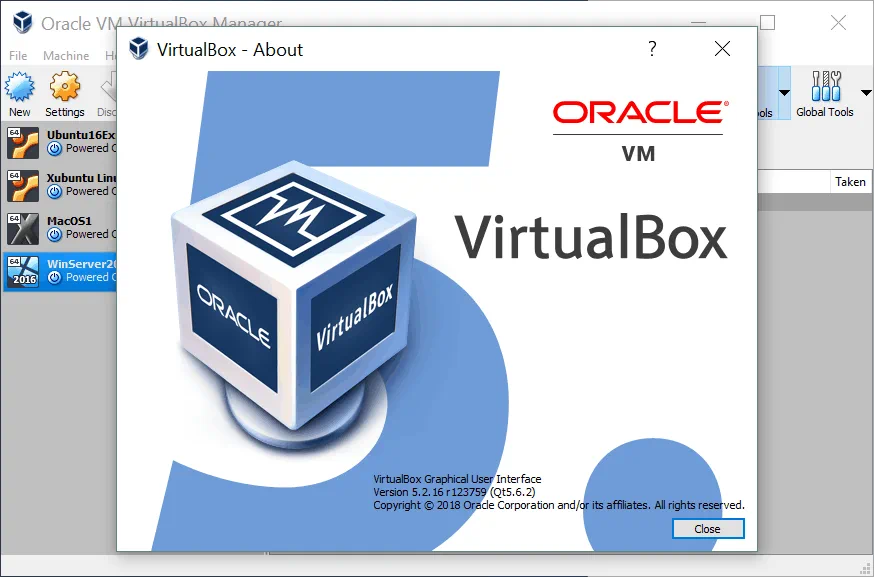
You can go to File > Check for Updates to check and see if any updates are available. This notification pop-up window usually appears automatically after launching VirtualBox when a minor update is available (for example update from v.5.2.16 to v.5.2.30). Click the download link displayed in the window below if you wish to download that version for an update. The installer that is downloaded can be used as an updater.
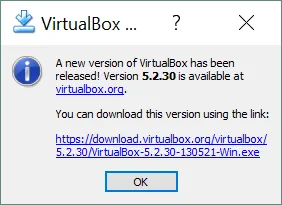
If you want to download the latest version and perform a major version update, go to the official VirtualBox site and download the latest VirtualBox installer for your platform (Windows in this case). VirtualBox 6 contains a set of new features including VM export to Oracle Cloud, high-resolution support, GUI improvements, better 3D graphics support, etc. Be aware that VirtualBox 6 supports only 64-bit host operating systems. If you have a 32-bit host operating system, you should use VirtualBox 5 or install the 64-bit host OS in order to install the newest VirtualBox 6 version.
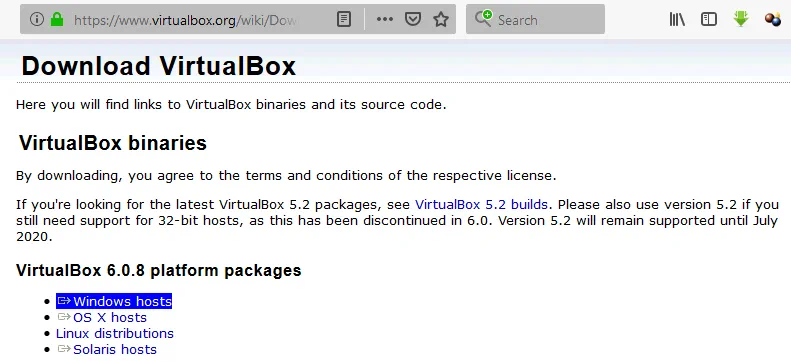
Save the installer file (VirtualBox-6.0.8-130520-Win.exe in this case) to a custom location.

Close your existing VirtualBox instance, and shutdown VMs that are running. Right click the executable installer file and hit Run as Administrator. The Welcome screen of the installation wizard should appear.
Go to the second screen, and check the installation path and the components to install/update. The installation path must be the same as that of your old VirtualBox version which is going to be updated. Generally, the process of updating VirtualBox is similar to the process of installing VirtualBox for the first time.
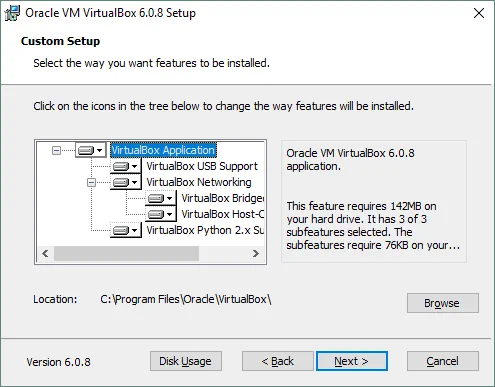
On the next step of the VirtualBox setup wizard, tick the necessary checkboxes to create shortcuts and register file associations.
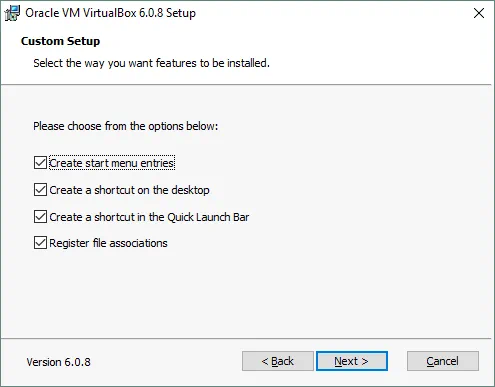
Accept the warning about network interfaces that will be temporarily disconnected during the next installation/updating step. This warning allows you to avoid unexpected interruption of the network connection during installation. Hit Yes when you are ready to proceed without any concern that, for example, a critical downloading process could be aborted.
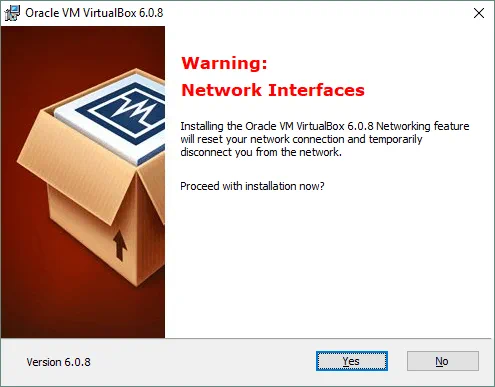
If you have not closed your VirtualBox application yet, the updater will ask you to do so before you can continue, as some files that are in use by a running VirtualBox instance need to be updated. The application name and process Id are displayed in the warning message. After closing a running VirtualBox instance, click Retry to resume the VirtualBox update.
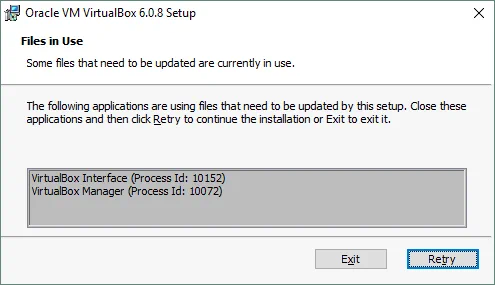
The next question is asked by Windows Security for installing Oracle Universal Serial Bus device driver. Tick the check box “Always trust software from Oracle Corporation” since Oracle is a trusted software manufacturer, and hit Install.
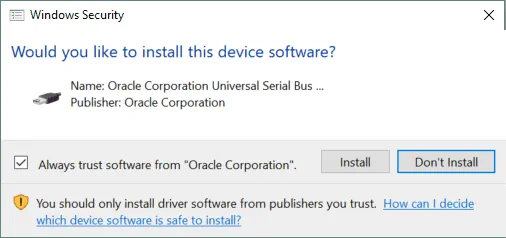
Finally, on the Installation Complete screen, tick the check box “Start Oracle VM VirtualBox 6.0.8 after installation” and hit Finish.
After opening the VirtualBox that has been updated, you can see some visual changes in the GUI (graphical user interface), though the traditional concept is preserved. All configured VMs and VirtualBox settings are kept after updating.
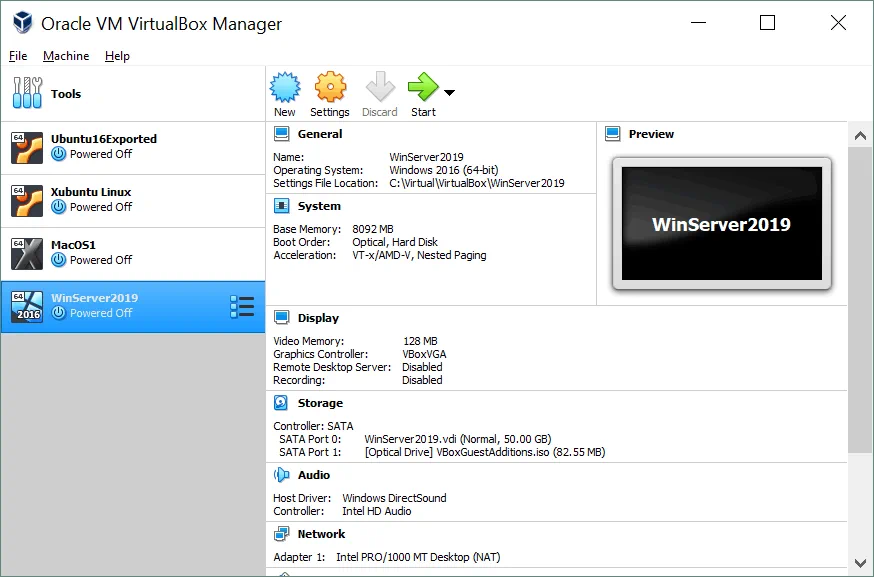
If you have installed VirtualBox Extension Pack, VirtualBox will ask you to update the Extension Pack. Read about Extension Pack installation in one of our upcoming blog posts about VirtualBox. At this point, the VirtualBox update on Windows is complete. In the next section, see how to update VirtualBox on Mac.
How to Update VirtualBox on Mac
The process of updating VirtualBox on macOS X is similar to those required for updating VirtualBox on Windows. Let’s check the version of VirtualBox that is already installed on Mac. To open VirtualBox, go to VirtualBox > About VirtualBox.
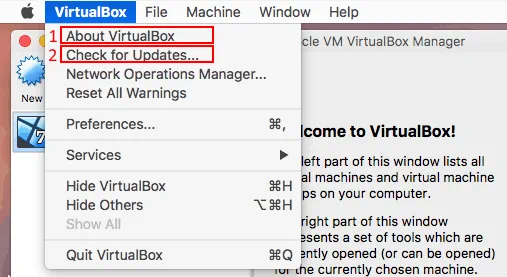
Observe that the current version of installed VirtualBox is 5.2.30. From here, you can go to VirtualBox > Check for Updates and check whether there any recommended updates.
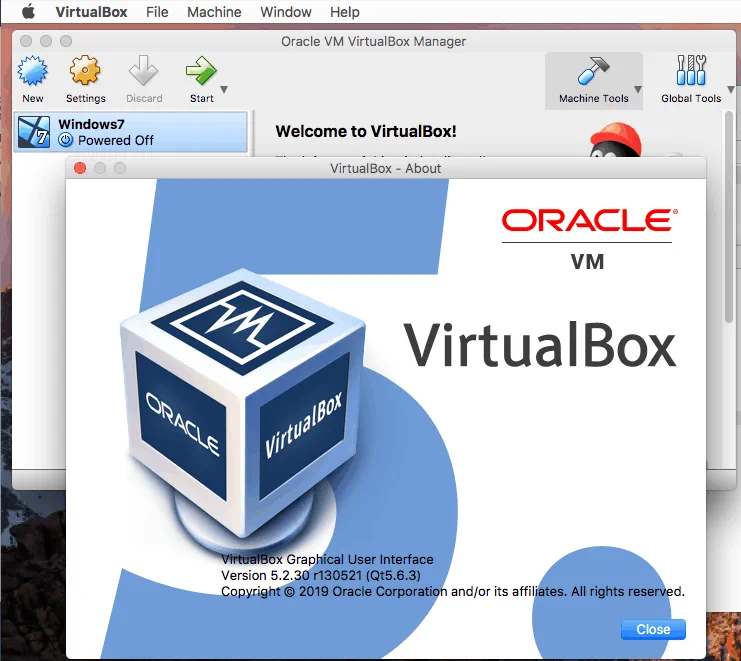
Visit the official site and download the newest VirtualBox installer to be used to update an existing VirtualBox version on macOS. Save the DMG installation VirtualBox image (VirtualBox-6.0.8-130520-OSX.dmg in this case) to the custom folder.

Shut down all VMs and close the window of your old VirtualBox version. Open the DMG image and double click on the VirtualBox.pkg icon to run the VirtualBox package installer. The VirtualBox installation/update wizard is opened after that.
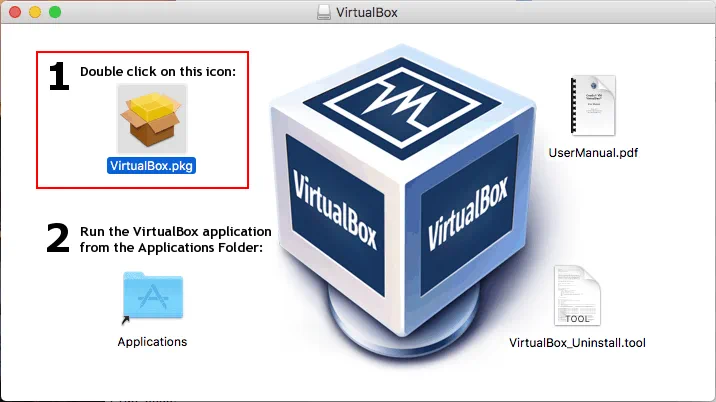
On the first screen of the wizard, click Continue and confirm that you trust this installer.
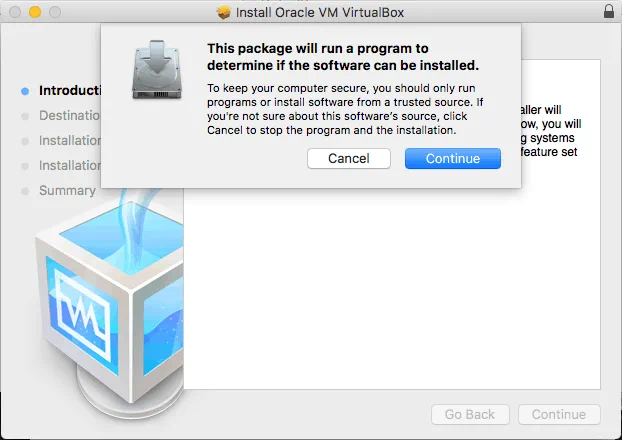
Note: In macOS Mojave (macOS 10.14), you may need to open System Preferences, then go to Security & Privacy where in the General tab of the window, click the lock icon to unblock the application installer. Enter the administrator password, and then click Allow. Launch the VirtualBox installer again to update VirtualBox on macOS.
To update VirtualBox on macOS, keep the location of VirtualBox the same as it was before. The installer will overwrite old files. Type your password to confirm the installation and continue to the next step.
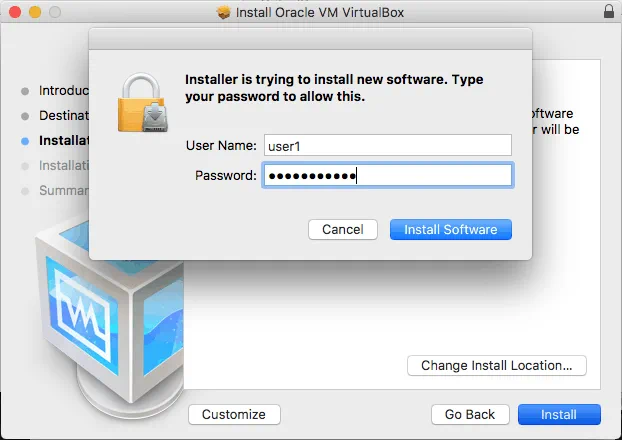
Wait until files have been copied to the appropriate directories of your macOS system. In the end of the update process, the installer asks you what you want to do – move the installer file to the Trash or keep the file. Select the option that is better for you and close the installer window.
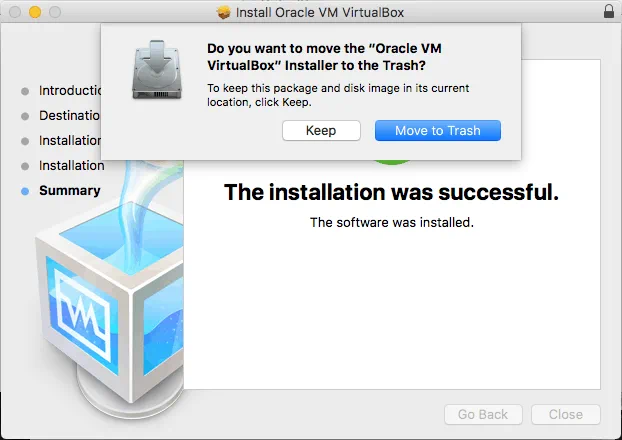
Now you can open your updated VirtualBox on macOS. Open Launchpad and click the VirtualBox icon.
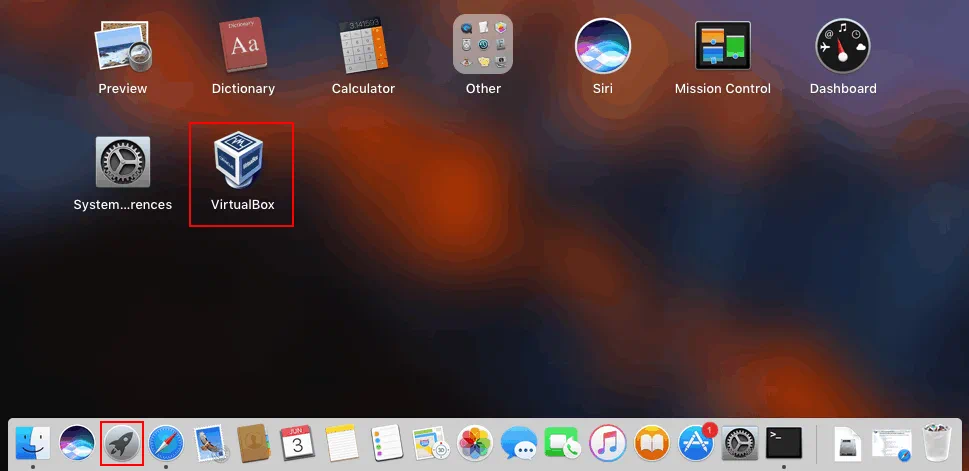
As you can see, all VMs created previously are in the place and the configuration of VirtualBox is preserved. Click VirtualBox > About VirtualBox to make sure that you have the latest VirtualBox version on your Mac now.
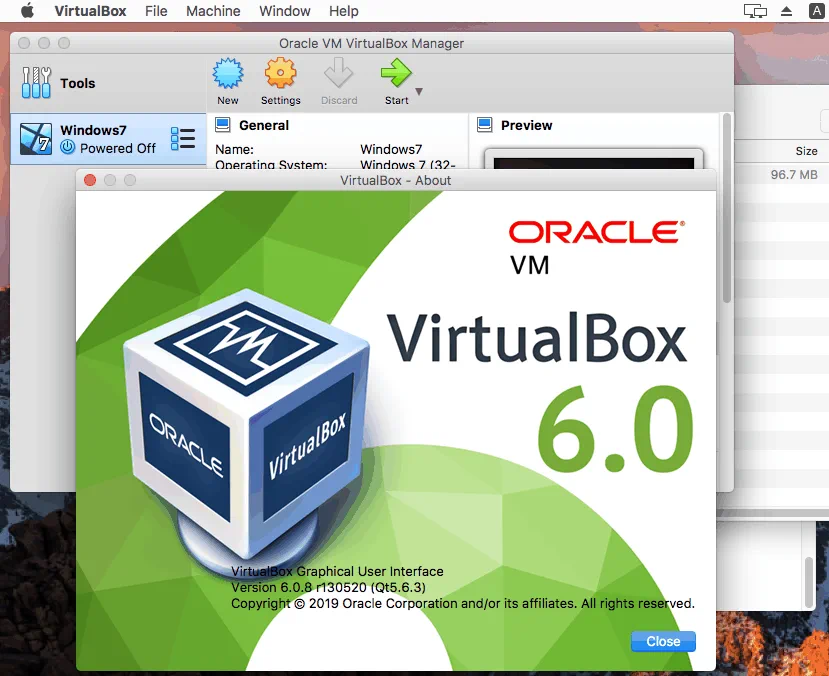
Conclusion
As you can see, updating VirtualBox is an easy process. The first part of the blog post explains how to update VirtualBox on Windows and after reading the second part you know how to update VirtualBox on Mac. Thanks to the multiplatform nature of VirtualBox, the procedure of its update is similar for all supported platforms and the best feature is that all your tuned VMs and VirtualBox configuration are completely preserved after the update. Try updating VirtualBox on your machine to get the latest fixes and features.
Source:
https://www.nakivo.com/blog/how-to-update-virtualbox/













